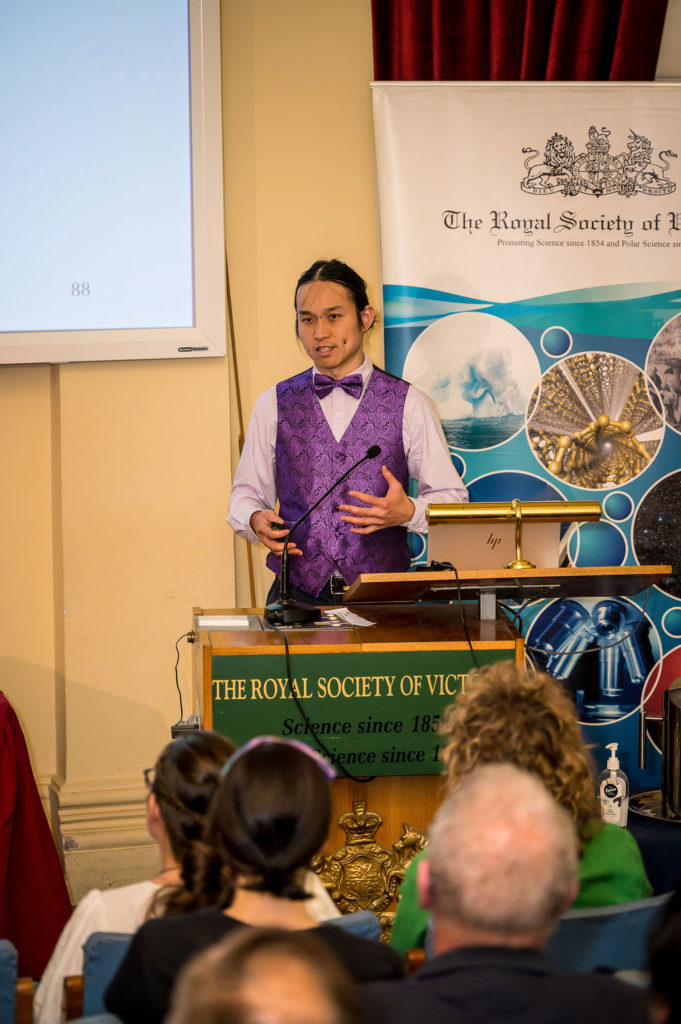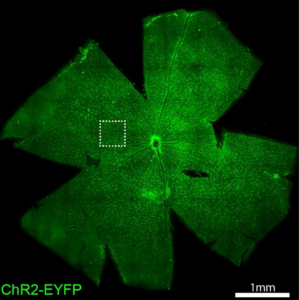The Lighter Side of Building Bionic Eyes
The Royal Society of Victoria annually awards four competitive prizes to final year PhD students in all areas of the Biomedical & Health Sciences, Biological Sciences (Non-human), Earth Sciences, and Physical Sciences. In September 2023, we heard from this year’s eight finalists about their brilliant work in these fields. Over the coming months, they will share a written summary of their presentations in Science Victoria.
For more information about the RSV’s Young Scientist Research Prize, visit rsv.org.au/young-scientist-research-prizes
—
The lighter side of building bionic eyes
By William Kwan MRSV
RSV Young Scientist Research Prizes (Biomedical & Health Sciences) – 1st place winner

Over 100 million adults worldwide will be affected by mild to severe visual impairment in their lifetime. Sight begins with light. Visual processing begins with light inputs to photoreceptors in the retina, which signal to specialised neurons, and the signal is sent along a pathway to finally reach the brain. Many cases of visual impairment are due to photoreceptor loss, which could be due to genetics (e.g. retinitis pigmentosa) or ageing (e.g. macular degeneration). In addition to the physical and mental health toll that the visually impaired face, the global economic burden exceeds AUD$600b. As such, there is a concerted effort globally to address this health issue.
At the dawn of the 21st century, bionic eyes were being developed as a treatment strategy. They work by electrically stimulating the remaining healthy retinal tissue to evoke signal transmission between retinal cells and the brain. As our knowledge of retinal biology and engineering progressed, some devices have provided a degree of visual recovery in patients, allowing them to perceive objects and large letters. While this is a remarkable achievement, these devices do not provide patients with enough visual acuity to mean that they are no longer regarded as legally blind. Considerable research is still required to develop implants that provide more substantial vision restoration.
One of the issues with current devices is off-target stimulation. The electrical stimulation used to activate cells in the retina tends to spread, leading to inadvertent broad activation and poor visual acuity. As such, developing alternative stimulation methods that deliver greater spatial precision would be invaluable for vision restoration.
A stimulation method that shows promise as a viable alternative is optogenetics, a technique where cells of interest are genetically modified to express light sensitive proteins called opsins so that they can be activated by light. By specifically targeting opsin expressing cells, optogenetics improves spatial resolution in cochlear implants, provides greater control in regulating irregular heart rhythms, and recently has been tested in vision restoration. However, optogenetics also has a limitation: its poor temporal kinetics. The most frequently used opsins are unable to reliably activate neurons at frequencies typical in a healthy retina.

As part of my PhD, I am investigating methods to improve the temporal bandwidth of optogenetics so that it could, potentially, be used in bionic eyes. One approach my lab has adopted is a hybrid strategy of both optogenetic and electrical stimulation. We stimulate optogenetically and deliver a level of electricity low enough that we don’t evoke off-target stimulation but enough to leverage the high temporal fidelity of electrical stimulation. In animal models, my preliminary results are promising, however, this hybrid approach still requires further investigation to determine whether translation to clinical trials is possible.
We hope that by resolving the temporal limitations of optogenetics, crossing the threshold of legal blindness will be possible for future bionic eyes. Furthermore, as bionic devices such as cochlear, heart or limb implants still predominantly use electricity to stimulate neurons, we envisage that hybrid stimulation could potentially enhance the way these devices interface with neural tissue. Achieving this will ultimately provide greater functional recovery and ultimately improve the quality of life for patients who receive them.
Read more from the finalists of the 2023 RSV Young Scientist Research Prizes:
Gusts in the Headwind, by Dr Grace Lawrence MRSV
Looking at Clouds in the Sky is More Complex Than You Think, by Estefania Montoya Duque MRSV
Getting Back on Track, by Sarah Mele MRSV
Harnessing Immune Cells in the Bowel to Fight Cancer, by Marina Yakou MRSV
The Lighter Side of Building Bionic Eyes, by William Kwan MRSV
Where Do We Come From, and When?, by Dr Wenjing Yu MRSV
How Fire Shapes Plant Life Cycles, By Ella Plumanns Pouton MRSV






